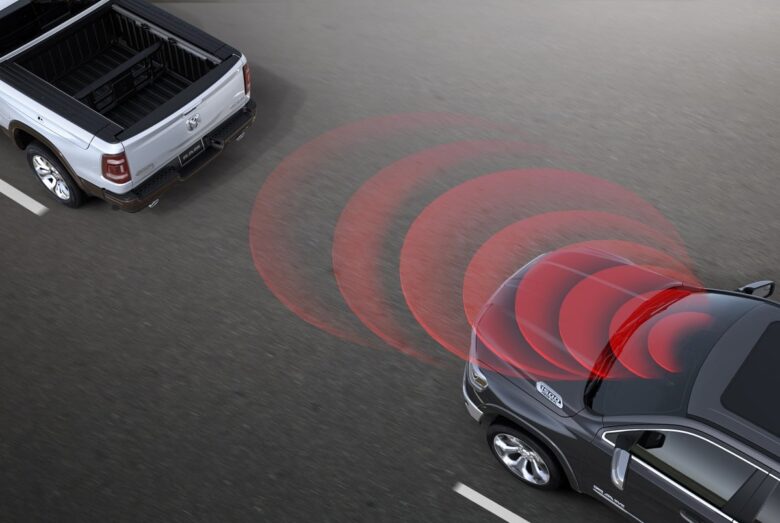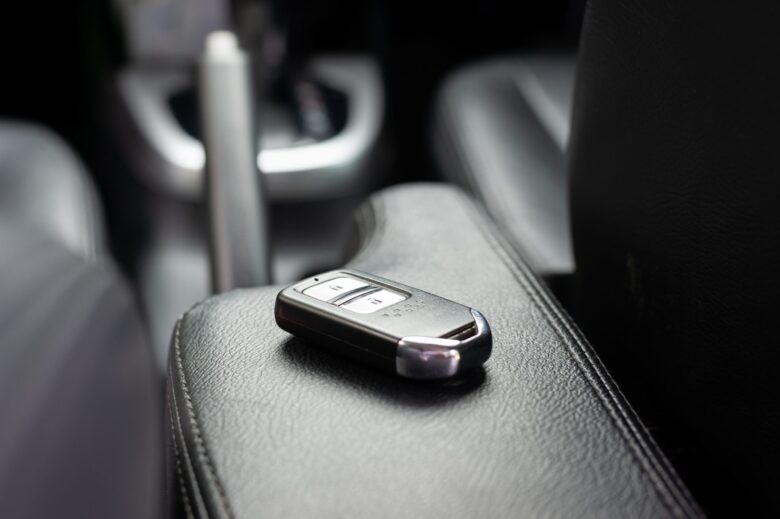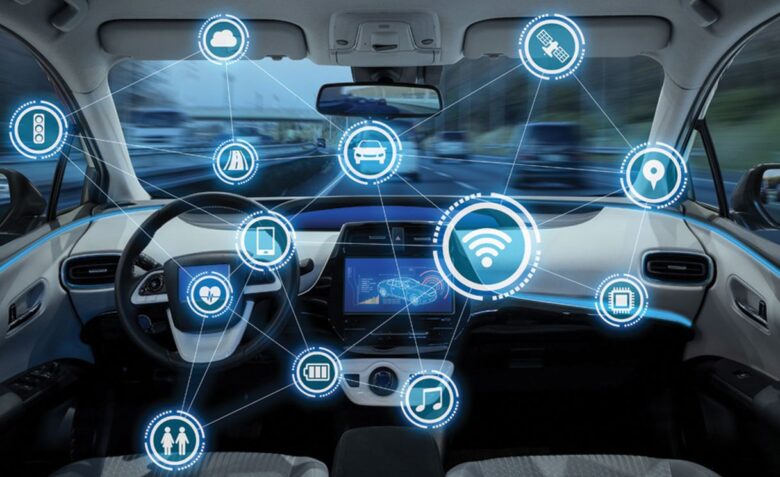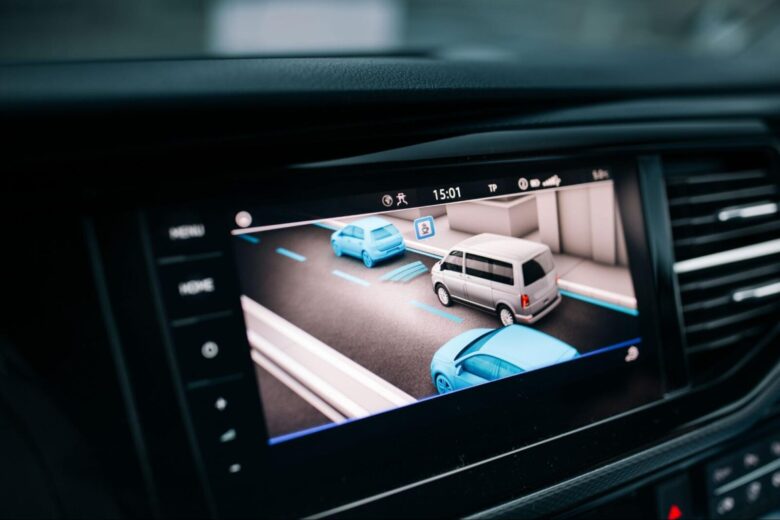Over the past ten years, the world of driving assistance systems has witnessed remarkable advancements. They have transformed how we interact with our vehicles, thus enhancing our overall driving experience. These advancements are driven by a common goal: to make driving better, safer, and more convenient.
From cutting-edge technologies that monitor driver behavior to sophisticated systems that take control of heavy traffic, the realm of driving assistance has seen a surge of innovation. Here are nine new things in driving systems.
1. Automatic Emergency Braking Systems
Automatic Emergency Braking (AEB) systems are designed to enhance safety by assisting drivers in avoiding or mitigating collisions. These systems use sensors, such as radar, cameras, or lasers, to detect potential collisions with vehicles, pedestrians, or other obstacles in the vehicle’s path.
When an imminent collision is detected, the AEB system can automatically apply the vehicle’s brakes or provide braking assistance to reduce the severity of the impact. By acting as a second pair of eyes and reacting faster than human reflexes, AEB systems help prevent or minimize the impact of accidents.
This mainly works when the driver may be distracted or unable to react in time. Get more info here and find the largest ranges of smart sensors and features that improve vehicle safety.
2. Forward-Collision Warning Systems

Forward-Collision Warning (FCW) systems work in tandem with automatic emergency braking systems to provide an additional layer of safety. Like the AEB, they use sensors to monitor the distance and relative speed between the vehicle and objects or vehicles in front of it.
If the system detects a potential collision, such as a rapidly decelerating vehicle or an obstacle in the road, it alerts the driver through visual or auditory signals. This warning allows the driver to react promptly and take appropriate evasive action to prevent a collision.
FCW systems are especially effective in situations where there is a sudden change in traffic conditions or when the driver’s attention is momentarily diverted.
3. Adaptive Headlights
Adaptive headlights are advanced lighting systems that dynamically adjust the direction and intensity of the vehicle’s headlights based on various factors, such as vehicle speed, steering angle, and road conditions.
They automatically pivot or swivel the headlights in response to the vehicle’s movement, providing improved visibility around curves and corners.
By illuminating the road ahead more effectively, adaptive headlights enhance safety. They increase the driver’s visibility of potential hazards, pedestrians, and road markings.
Some adaptive headlight systems also include features like automatic high beams, which toggle between high and low beams based on surrounding traffic and lighting conditions to avoid dazzling other drivers while maximizing visibility for the driver.
4. Pedestrian and Cyclist Detection Systems
Pedestrian and cyclist detection systems utilize advanced sensors, such as cameras and radar, to detect and track the presence of pedestrians and cyclists near the vehicle. The systems employ sophisticated algorithms to analyze the sensor data and identify potential collision risks with pedestrians or cyclists.
By continuously monitoring the surroundings, they can provide timely alerts to the driver if there is a risk of collision. In some cases, if the driver fails to respond, the system can automatically apply the brakes or take evasive action to mitigate or avoid the collision altogether.
Pedestrian and cyclist detection systems enhance safety, particularly in urban environments or situations with heavy pedestrian or cyclist traffic.
5. Advanced Driver Monitoring Systems
Advanced driver monitoring systems utilize a combination of sensors, cameras, and machine learning algorithms to monitor the driver’s behavior, attentiveness, and overall fitness to drive.
With these systems, the car gets to analyze various factors, including the driver’s eye movements, head position, facial expressions, and even biometric data, to assess their level of alertness and engagement with the driving task.
Additionally, the system can detect signs of drowsiness, distraction, or impairment and alert the driver, reminding them to stay focused on the road.
Even better, some can integrate with other driver assistance systems, adjusting their behavior based on the driver’s state to further enhance safety.
6. 360-Degree Camera Systems
360-Degree cameras are strategically positioned around the vehicle to provide a complete and real-time view of the vehicle’s surroundings. These cameras capture images from all angles, including the front, rear, sides, and even the bird’s-eye view, which is particularly useful for parking or maneuvering in tight spaces.
The camera feeds are stitched together to create a comprehensive and seamless view displayed on the vehicle’s infotainment screen or instrument cluster.
This system enhances the driver’s situational awareness by eliminating blind spots and providing a holistic view of the environment. All this helps to prevent collisions with objects, pedestrians, or other vehicles and in precise maneuvering.
7. Augmented Reality Heads-Up Display
Augmented Reality Heads-Up Display (HUD) systems combine traditional heads-up display technology with augmented reality overlays to provide drivers with real-time information directly in their field of view. These systems project relevant information, such as navigation instructions, speed limits, and traffic alerts, onto the windshield or a dedicated display panel.
By blending virtual information with the real-world environment, augmented reality HUD systems enhance situational awareness and reduce the need for drivers to shift their focus between the road and the instrument cluster.
This technology helps drivers stay informed, making navigation more intuitive and safer.
8. Remote Vehicle Control

Remote vehicle control systems enable drivers to access and control certain functions remotely through a mobile application or a dedicated remote control. These systems allow drivers to perform tasks such as locking or unlocking the doors, starting the engine, adjusting climate controls, and even pre-conditioning the vehicle before entering.
These systems add convenience and comfort by providing remote access and control over the vehicle, especially when pre-warming or pre-cooling the interior is desired or when the driver wants to lock or unlock the vehicle from a distance.
9. Autonomous Parking Systems
Autonomous parking systems take the hassle out of parking. These systems can detect and analyze parking spaces, assess the vehicle’s position and orientation, and calculate the optimal trajectory for parking. Once engaged, the system takes control of the steering, acceleration, and braking, guiding the vehicle into the designated parking spot with precision.
Autonomous parking systems enhance convenience, especially in crowded or tight parking areas, by eliminating the need for the driver to perform complex maneuvers or struggle with limited space.
Conclusion

In 2024, driving has undergone a remarkable transformation, becoming safer, more convenient, and highly efficient. The driving assistance systems discussed above represent just a glimpse of the advancements that have revolutionized our experience on the road.
These cutting-edge technologies have significantly elevated the standards of safety and convenience in modern vehicles.
As we look to the future, these advancements in driving assistance systems hold great promise. Manufacturers have incorporated many of these systems into new vehicle models, demonstrating their commitment to enhancing safety and driver experience.
The ongoing evolution of these technologies inspires optimism, and we can only imagine the incredible advancements that await us in the years to come.


